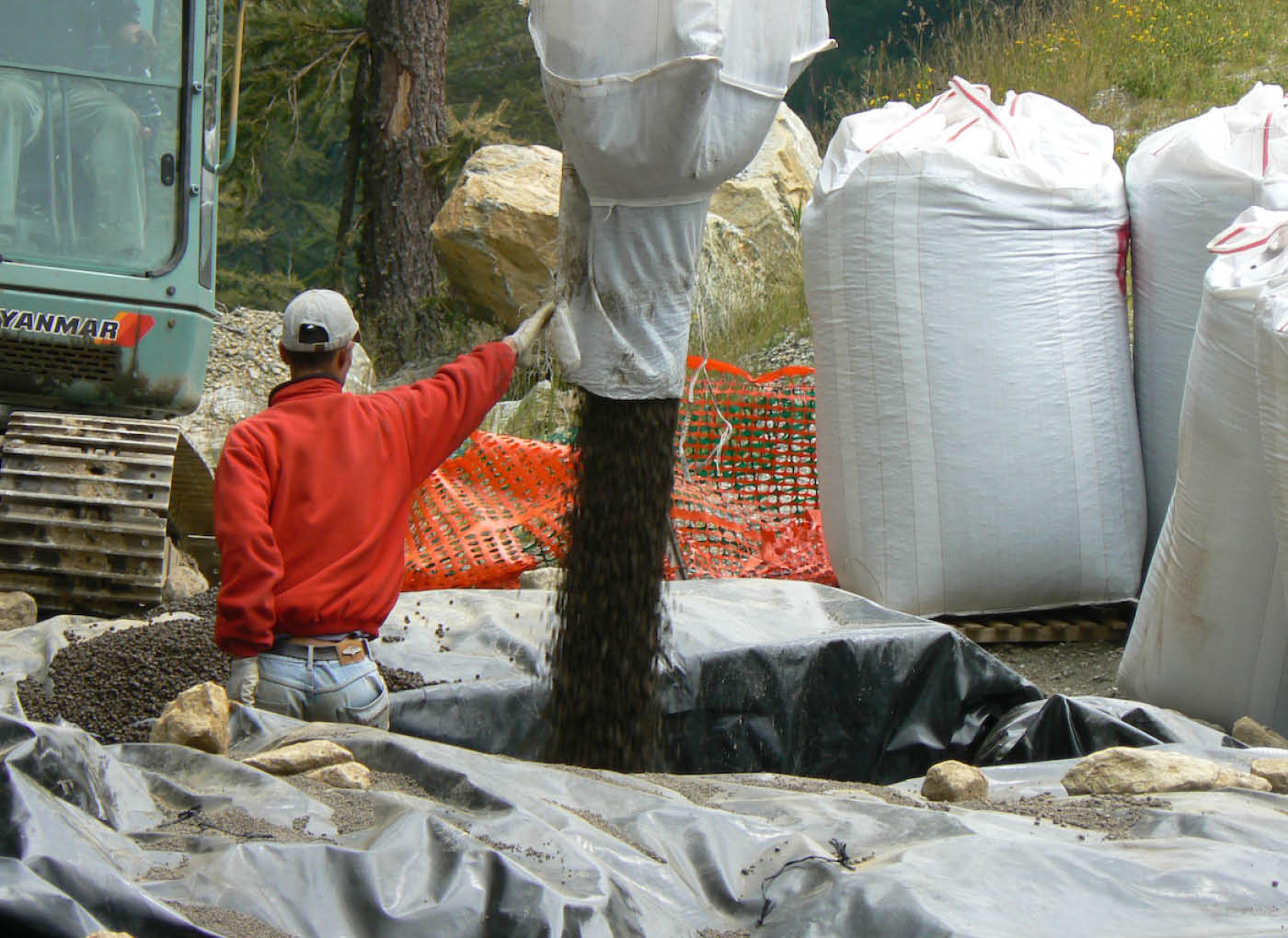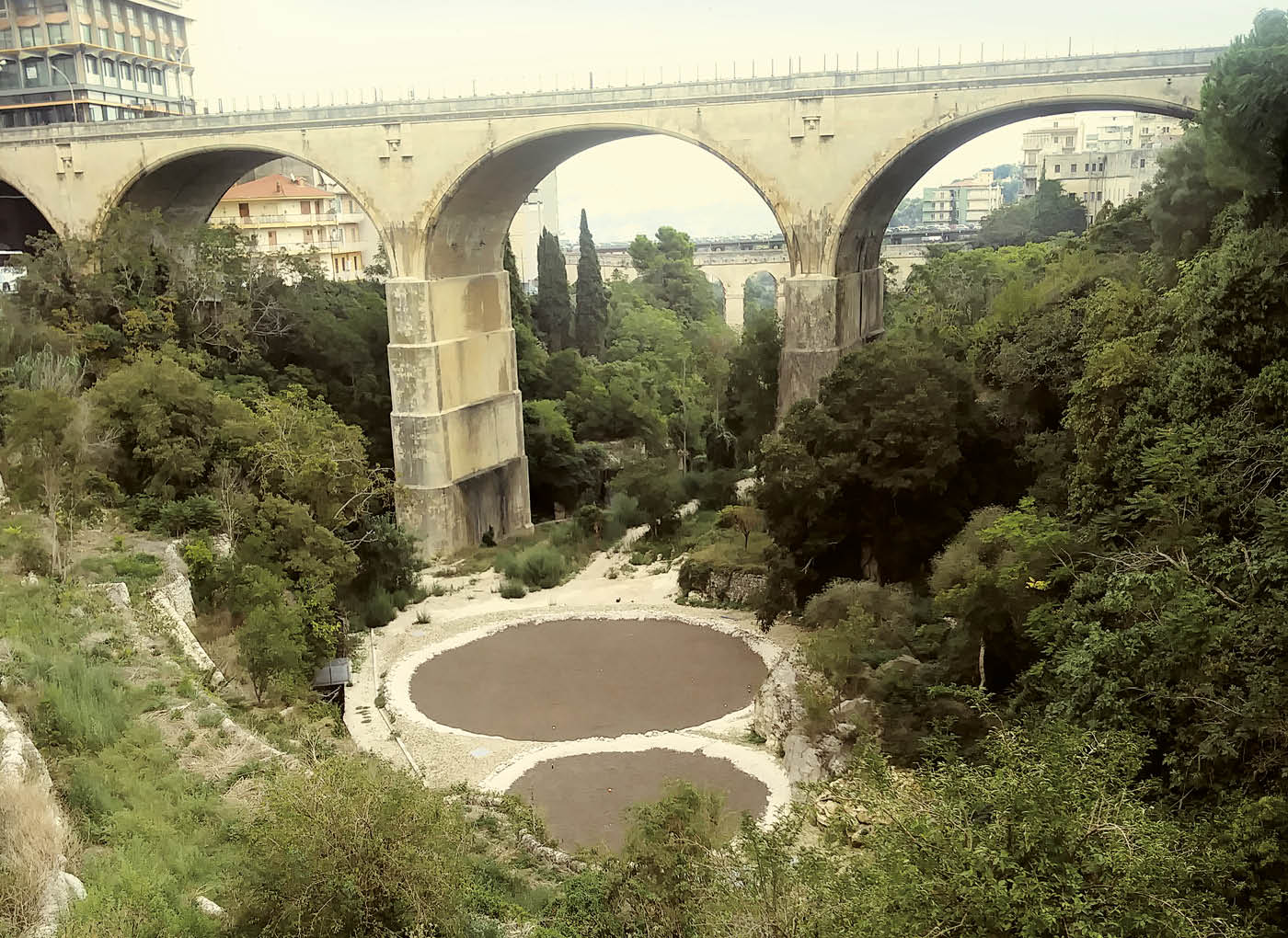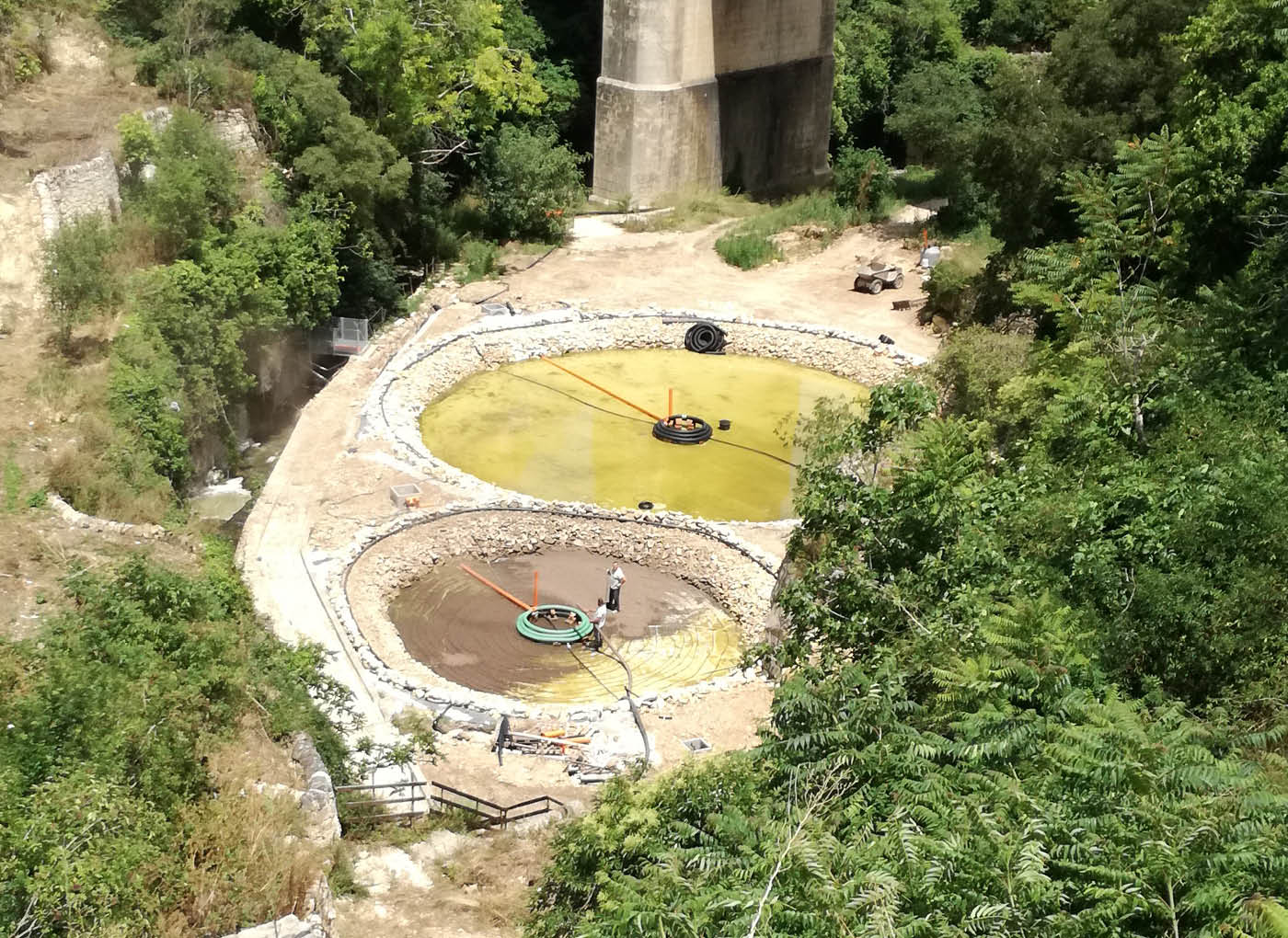A constructed wetland, also known as phytopurification system, is a natural wastewater treatment method based on exploiting the self-purifying functions of aquatic ecosystems such as wetlands, i.e. the combined action of bacterial microorganisms, specific macrophyte plant types and a special filtering substrate.
PRINCIPLE OF OPERATION
A constructed wetland is an engineered system built for sewage treatment consisting of a waterproofed basin filled with a filtering substrate that is planted with semi-aquatic macrophyte plants, reproducing some of the characteristics of a natural wetland or a reedbed.
The water to be purified is first pre-treated and then fed into the basin, where it passes through the substrate.
The plant roots develop in the substrate and set free part of the oxygen that the plants absorb through their leaves and stems. This oxygenation creates conditions in the substrate that enable bacterial flora (the biofilm) to proliferate.
The combined action of:
- the filtration of water through the substrate,
- chemical degradation by the bacterial flora
- the absorption of water by the plant roots
sets off physical, chemical, and biological processes that are both simultaneous and sequential and continue for so long as there is water in the system. This removes the most significant pollutants (nitrogen, phosphorus, suspended solids, heavy metals, organic substances, pathogenic microorganisms) deriving from civil and industrial waste.
SUBSTRATE FOR CONSTRUCTED WETLANDS:
Laterlite Expanded Clay pebbles with high porosity and water holding capacity, natural, chemically inert, light and insulating, are the ideal substrate for creating the filter bed where the plant roots develop and
Advantages of using Laterlite Expanded Clay in constructed wetlands:
- it provides a large surface area for filtrationbecause of its intergranular and intragranular porosity
- it is an ideal support for the biofilmto develop because the granules of expanded clay contain a dense network of cavities. The biofilm consists mainly of bacterial colonies and this is where the biological purification process actually occurs
- optimised development and anchoring for the plant roots, which grow easily in the intergranular spaces of the expanded clay
- durability: expanded clay will not rot, is not subject to chemical or physical alteration, does not degrade over time, and is resistant to acids, bases, solvents, and freeze/thaw cycles.
- it is extremely easy to lay and maintainbecause of its lightness and its suitability for pneumatic pumping.
- it makes possible low environmental impact solutionsthat integrate easily with the surrounding context and is ANAB-ICEA certified for sustainable building.
- it gives excellent control of the odoursthat result from waste water treatment.
Laterlite Expanded Clay is suitable for use in constructed wetlands that are associated with domestic, agricultural, or industrial applications, for instance for the environmental upgrading of parks, nature reserves, and protected areas; in the hospitality sector (for example holiday farms, holiday apartments, hotels, camping sites, bathing establishments, and mountain lodges) and for farms, wineries, and sports facilities.
Laterlite Expanded Clay can be used in open-air constructed wetlands plants of either subsurface flow (SSF) or free water surface flow (FWS) type, or in greenhouses where the vegetative activity of the plants can be fully exploited throughout the year.
One of the most advanced greenhouse phytopurification systems is the “Organica” ecological wastewater treatment system. This recreates an authentic ecosystem both in the greenhouse and the substrate. Laterlite Expanded Clay can be used successfully in systems of this type.
CONTACT US








